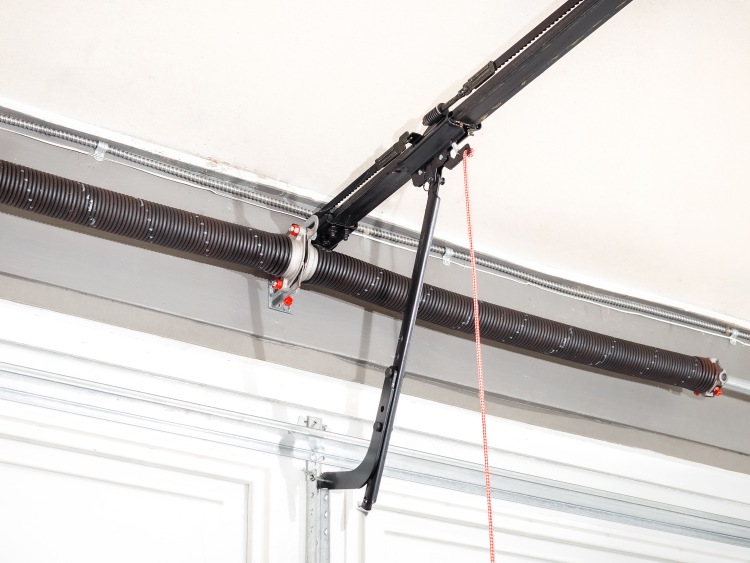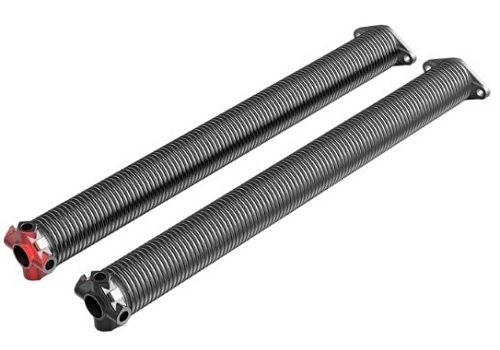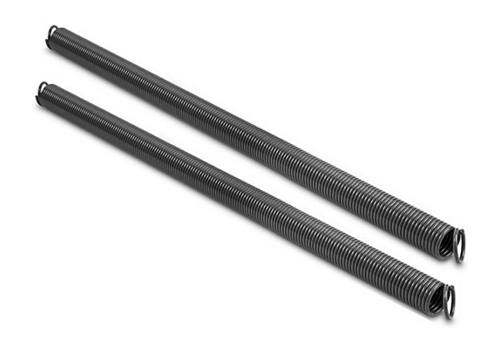Torsion Springs: Comparing Popular System Types

Back in the not-so-distant past – the late twentieth century – homeowners really only had two options for garage door springs: a pair of extension springs or one big torsion spring. The extension setup required two because they ran along the tracks on both sides of the door – using just one would lift unevenly and create all sorts of issues. Torsion springs, on the other hand, sit above the center of the door, distributing tension evenly, so one was all you needed. That was the norm for decades. But lately, more and more doors are being equipped with two torsion springs instead of one. Why the change? Let’s dive in and see whether doubling up is worth it.
What Are Torsion Springs?
Torsion springs are tightly wound metal coils mounted horizontally above your garage door. When the door closes, these coils twist and build up mechanical energy. When it opens, they unwind and release that stored torque, helping to lift the door with ease. The force moves through a steel shaft connected to cable drums at each end, winding or unwinding cables attached to the door’s base. The result is a smooth, steady motion that’s quieter, safer, and far more durable than the old-school extension systems many of us grew up with.
TORSION SPRINGS • These tightly wound coils store energy by twisting, making it easier to lift and lower heavy doors smoothly. Mounted horizontally above the door, they rotate a shaft that spreads lifting force evenly across the system.
Torsion Springs vs. Extension Springs
Even though torsion springs have become the go-to choice, it’s still helpful to know what sets them apart from their predecessors. Extension springs stretch and retract along the horizontal tracks beside the door, while torsion springs twist to create torque. Both do the job of balancing the door’s weight – but they don’t do it in quite the same way, and the results are noticeably different.
Here’s a quick look at how the two systems compare:
| Aspect | Torsion Springs | Extension Springs |
|---|---|---|
| Mounting Location | Above garage door opening | Along horizontal tracks |
| Mechanism | Twists to lift door | Stretches to lift door |
| Durability | Longer lifespan, 15,000+ cycles | Shorter lifespan, ~10,000 cycles |
| Safety | Generally safer with less recoil risk | Higher risk if spring snaps |
| Smooth Operation | More controlled and quiet | More jarring and noisy |
| Cost | Higher upfront cost | Lower upfront cost |


Extension springs still work, but torsion systems outperform them in just about every way – offering smoother motion, longer life, and better safety. That’s why you’ll find torsion springs on nearly every new garage door today.
Single vs. Dual Torsion Springs: How They Compare
If you’ve owned your home for a while, you might be wondering why newer garage doors come with two torsion springs instead of one. Did manufacturers change the design for a reason – or is this just a clever way to sell more parts? And why didn’t anyone mention it when your last door was installed in Northglenn?
Don’t worry – it’s not a gimmick or a garage door conspiracy. The move toward dual torsion springs is actually based on practicality, safety, and long-term performance. Here’s why two springs often make better sense than one:
- Safety – This one’s huge. If one spring snaps, the other keeps the door from crashing down. That backup support can prevent injuries, property damage, or worse. It’s a level of protection that single-spring setups simply can’t offer.
- Efficiency – Two springs share the workload. Lifting a garage door that weighs a few hundred pounds is much easier when both springs pitch in – like having an extra pair of hands. Whether you’re in Broomfield or anywhere else, your system will run smoother and strain less.
- Longevity – Because the weight is distributed evenly, each spring faces less wear. That means fewer service calls, fewer replacements, and a longer lifespan overall for your garage door systems.
- Reduced Wear and Tear – The benefits don’t stop at the springs themselves. Since the springs handle more of the heavy lifting, the opener motor doesn’t have to work as hard either. That reduces stress on its gears and components, helping everything last longer and operate more quietly.
- Cost Savings – Two torsion springs may cost a bit more up front, but they’ll save you money over time. You’ll make fewer service calls, experience fewer spring failures, and reduce strain on other parts. Avoiding a costly door replacement down the line is just the cherry on top.
Here’s a quick side-by-side look at how single and dual torsion setups stack up:
| Feature | Single Torsion Spring | Dual Torsion Springs |
|---|---|---|
| Safety | Less safe; door may fall if spring breaks | Improved safety; one spring holds door if the other fails |
| Weight Distribution | All load handled by one spring | Load evenly shared between two springs |
| Spring Lifespan | Shorter due to greater strain | Longer thanks to reduced workload |
| Motor Stress | Higher; motor assists more with lifting | Lower; motor works less overall |
| Cost Over Time | Higher maintenance and repair costs | Lower due to fewer service calls |
So yes, dual torsion springs might add a little extra to the installation cost, but they deliver better safety, smoother operation, and savings that pay off in the long run. For most homeowners, it’s money well spent.
The Bottom Line
As one of the most trusted garage door companies serving Broomfield and Northglenn, we get this question all the time. And our answer is simple: if you’re upgrading to torsion springs, go with the dual setup. You’ll get better performance, fewer maintenance headaches, and peace of mind knowing your door is safer and stronger.
Whether you’re curious about torsion springs or ready for a new garage door, the team at C & M Garage Doors is here to help. Give us a call today – we’ve built our reputation on expert service, honest advice, and always putting Colorado homeowners first.
